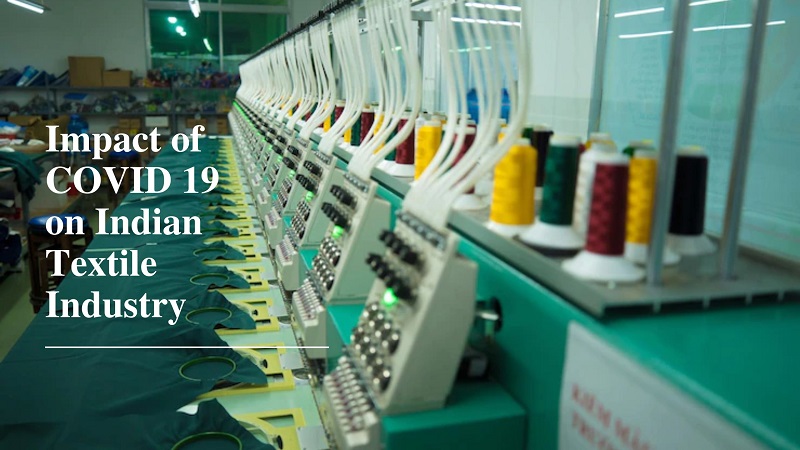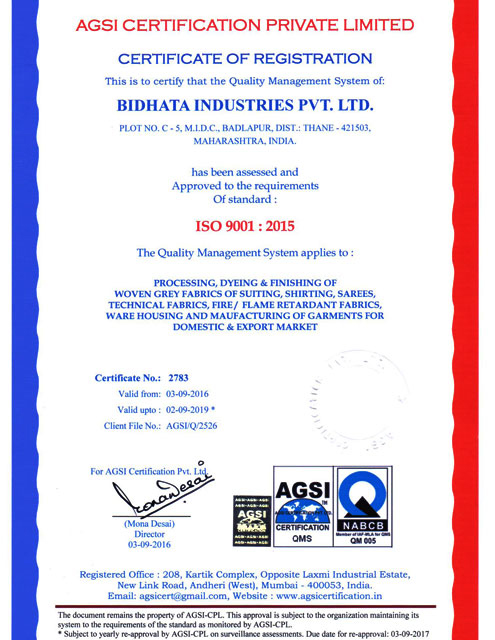Impact of COVID 19 on Indian Textile Industry
Indian textile is one of the most established industries in the country. India exported textile and clothing at nearly US$ 38.70 billion in the FY 2019 and is estimated to reach a US$ 82 billion target by FY 2021.
Overview
The textile industry of India is divided into many sectors; mostly based on two main categories known as hand-spun and hand-woven material areas. This material business is further linked to agribusiness as well as India’s antiquated cultural production segments. This makes the nation suitable to meet the market needs on the local and the global levels both. Also, the country is the largest producer of cotton followed by jute; increasing the export value for such fabric materials and clothing.

Market Size
There are 1200 textile mills operating in India from small to mid-sized and large that have 34 million cotton textile spindles. The cotton yarns that are produced from them contribute to 70% of Indian export. On the contrary China has 40 million spindles for cotton production. Dyeing, finishing and textile processing industry in India is being taken care of by small sized units under the knitting industry on a domestic scale. The coarser yarn production spindles are again below 40 as compared to China despite the export rate of technical textiles and others from India being at 80%. This entire scenario in the market size calls for a technological upgrade in India to race up in the global export market.
The COVID-19 Impact
Several Garment factories in China were ceased due to the coronavirus pandemic. This halted the export of yarns, fabrics and other clothing industry material from India to China and other countries. This is believed to slow down the cotton yarn exports by 50%; adversely affecting the spinning mills in India.
The lockdown massively affected the running of the textile fabric manufacturers in India. Several textile products that were pre-manufactured could not be serviced further due to lockdown. As a result, the financial interest of the production units began to decline; impacting the farmers badly who were already observing a lowered price. In addition to that, the prices were believed to decline further following the crisis.
Unlock India: Unwinding the Rope to Newer Opportunities
Unlocking India from lockdown was a sigh of relief. Despite the sector facing a workforce crisis at the beginning of unlocking India with a supply chain broken, high financial support and lowered confidence of workers, industry began to function. As different areas began to reopen, workers began to return to their workplace cities to offer extensive help in order to boost the textile business.
Also, the growing numbers of coronavirus led to a higher demand for PPE kit, masks, disposable bed sheets, disposable towels and many other hygiene related technical fabrics. Not just for frontline doctors, workers and other staff in the point of care committee but also police, airport authorities required them in great numbers worldwide. This opened up the export market for technical textiles manufacturers in India for such products. Infact, the country now holds a second place in the manufacturing of PPE kits in association with 600+ certified manufacturing companies.
Government Scheme: Backing up the Textile Economy
The Central government of India has designed many schemes supporting the small scale textile manufacturing companies in India that can improve the economy. By allowing 100% FDI of automatic route in this sector can increase the chances of around US$ 140 billion investments from several countries. To back the vision of growth and development, the government also announced upgrading and modernizing 21 ready-made garment manufacturing units across 7 states.
Reference:


Leave a Reply